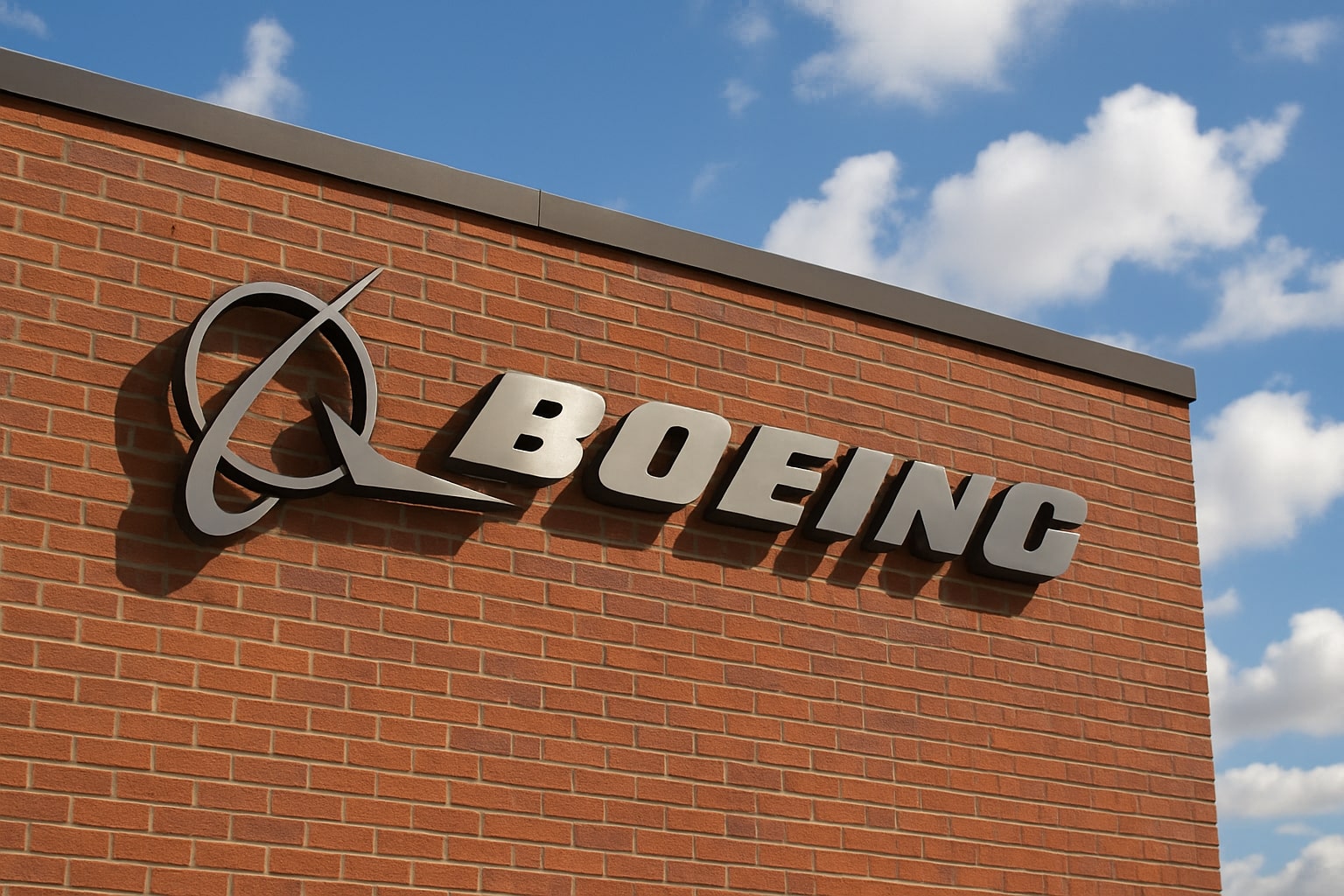
Boeing Stock (NYSE:BA) Takes Off Toward Recovery as Backlog and Cash Flow Strengthen
Boeing (NYSE:BA) trades at $214, up 1%, after logging $22.75B in Q2 revenue and 96 new jet orders worth $11.2B. With a $619B backlog and positive operating cash flow, the company’s long-awaited turnaround gains real altitude | That's TradingNEWS
Boeing Stock: Turnaround Momentum Gains Altitude Amid Strong Orders and Narrowing Losses
Boeing (NYSE:BA) continues to rebuild investor confidence, trading at $213.89, up 0.94%, as its long-awaited turnaround gains traction. After years of turbulence, the aerospace giant is finally showing consistent progress in orders, cash flow, and deliveries — signaling that the worst may be behind it.
The company’s Q2 2025 results showed revenue jumping 34.88% year-over-year to $22.75 billion, driven by higher commercial jet output. While Boeing still posted a net loss of $611 million, that figure marks a sharp 57.54% improvement from the prior year’s $1.44 billion loss, reflecting tighter cost control and efficiency gains.
Operationally, Boeing is hitting critical milestones. It delivered 55 aircraft in September, up from 33 a year ago, including 41 737 MAX jets and 14 wide-body models. Year-to-date, deliveries reached 440 aircraft valued at $33.2 billion, far exceeding 2024’s full-year total of 348. The company’s order book also strengthened sharply, with 96 new aircraft orders in September worth $11.2 billion, led by Turkish Airlines, Norwegian Air, and Uzbekistan Airways. Year-to-date, Boeing’s net orders stand at 774 aircraft valued at $83.7 billion, more than triple the previous year’s pace.
The backlog has swelled to $619 billion, ensuring years of revenue visibility. Investors have noticed, with BA shares climbing 25% year-to-date and 40% in the past twelve months, outperforming most industrial peers.
Financially, Boeing is finally turning the corner. The company generated $227 million in operating cash flow, reversing last year’s $3.9 billion cash burn. Free cash flow remains negative at -$2.63 billion, but that’s a 38% improvement from a year earlier. Liquidity has strengthened significantly, with cash and short-term investments rising 76.65% to $22.26 billion. Total liabilities declined 1.42% to $158.42 billion, while total assets grew to $155.12 billion. Although total equity remains negative at -$3.3 billion, the balance sheet continues to recover steadily.
Margins are also improving. The net profit margin rose 68.46% year-over-year to -2.69%, while EBITDA surged 145.77% to $238 million. Boeing’s cost discipline and operational improvements are starting to filter through to the bottom line, even as it continues to deal with certification costs and supply constraints.
The cash flow turnaround is perhaps Boeing’s strongest achievement. With commercial production rates rising, especially for the 737 MAX, the company is generating consistent inflows and expects positive free cash flow by year-end 2025. The 737 MAX production rate remains capped at 38 jets per month by the FAA, but Boeing is targeting an increase to 42 per month in early 2026. The 787 Dreamliner line is also ramping up, with seven aircraft delivered in September alone.
Beyond commercial aviation, Boeing’s defense and services units continue to provide steady earnings. The Global Services division generated $1.05 billion in operating profit on $5.28 billion in revenue, representing a 19.9% margin, the strongest since 2023.
Despite the progress, Boeing’s valuation remains conservative. At 1.9x forward sales and a market cap of $161.7 billion, the stock trades well below peers such as Airbus, which sits near 3x sales. Wall Street’s average price target ranges from $250 to $270, implying potential upside of 20–25%. Some long-term valuation models even place Boeing’s fair value near $320 per share, assuming free cash flow surpasses $5 billion by 2026 — a scenario that looks increasingly achievable given the backlog strength.
Read More
-
VOO ETF Hits $630 as Fed Shift and AI Growth Power 2026 Rally Toward $700
07.12.2025 · TradingNEWS ArchiveStocks
-
XRP ETFs XRPI & XRPR Aim for $1B Inflows as XRP Holds $2.02 Support
07.12.2025 · TradingNEWS ArchiveCrypto
-
Natural Gas Price (NG=F) Rallies to $5.29, Freezing Temperatures Spark Bullish Breakout
07.12.2025 · TradingNEWS ArchiveCommodities
-
USD/JPY Price Forecast - Dollar Extends Slide to 154 as BoJ Hawkish Pivot Drive Yen Toward 150
07.12.2025 · TradingNEWS ArchiveForex
Risks remain, particularly around regulation and execution. FAA production caps are still in place, and the MAX 7, MAX 10, and 777X certifications could face further delays. Airbus also maintains a lead in total deliveries — 434 versus Boeing’s 385 — underscoring the competitive pressure. Moreover, Boeing’s return on assets (-0.36%) and return on capital (-1.06%) indicate profitability remains fragile. Any renewed labor disputes or supply chain disruptions could delay the recovery.
Still, Boeing’s direction is unmistakably positive. Losses are narrowing, cash flow is improving, and order momentum is the strongest in years. At $213.89, the stock trades below its intrinsic potential, and a sustained recovery in deliveries could drive it back toward the $240–$260 range in the coming quarters.
For investors seeking exposure to the industrial rebound and the aviation recovery cycle, Boeing stands out as a company finally regaining altitude — a slow but steady ascent built on stronger execution, cash discipline, and a record $619 billion backlog that secures its long-term growth runway.


















